

Max Davies
2026 GWM Haval Jolion price and specs
2 Days Ago
The final edition of the black sheep in Hyundai’s i30 N flock is such a charmer that we’re sad to see it go.
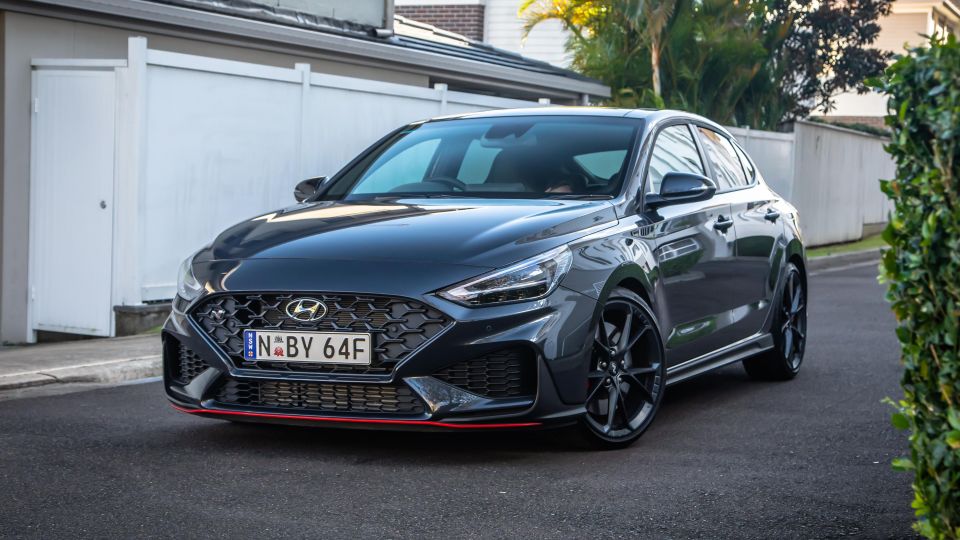
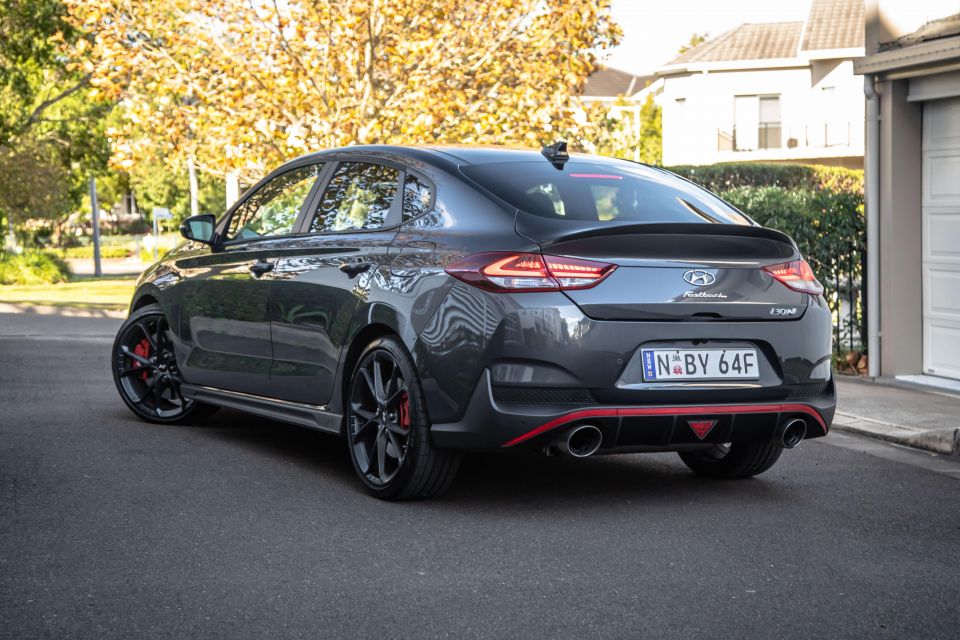

Quickly see how this car stacks up against its competition. Select any benchmark to see more details.
Where expert car reviews meet expert car buying – CarExpert gives you trusted advice, personalised service and real savings on your next new car.
The big-booted Hyundai i30 Fastback N always was a bit of a bridge between the ‘classic’ i30 N hot hatch that put the brand’s performance moniker on the map, and the largely reimagined, techno-stylised i30 Sedan N (or Elantra N as it’s known in the States) – and it seems that it was a bridge too far for many buyers.
The i30 Fastback N’s days were numbered when we reported on the last-hurrah Limited Edition version almost a year ago. And yet here it is, still on sale and ready for testing.
Presumably there are enough left for you to buy one, in what’s becoming a very long ‘last chance’ to buy.
Hyundai could’ve gone a number of ways with its Fastback Limited Edition format. It went for ‘raw appeal’ – the manual version we have on test is more raw, more old-school than its logical DCT-only i30 Sedan N alternative that asks for similar money.

Despite its focus on raw appeal, the Limited Edition has a fair smattering of luxury items to make it feel special and upmarket. Only 500 units were slated for sale.
Better yet, this final edition – and the only version of the facelifted i30 Fastback offered here – is based off the sharper-looking, recently facelifted model currently sold in Europe.
The Limited Edition comes with an upgraded 206kW engine, a Fastback-first paddle-shift DCT option, and bespoke touches such as logo-lit N Light bucket seats and lightweight forged rims.
So there’s a bit more to it than just merely fattening the equipment list of the old liftback we know.
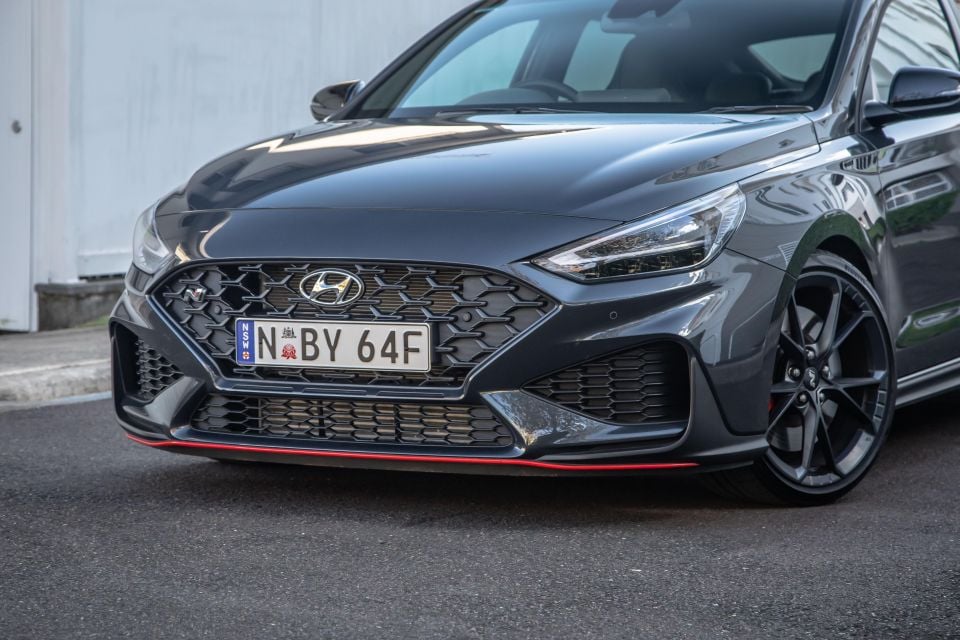
The manual version of the i30 Fastback N LE lists for $49,000 before on-road costs.
Or the same as the current price for the i30 Sedan N Premium. That’s $1500 up on the ask for an i30 Hatch N Premium manual ($47,500).
There’s also a DCT version of the Fastback LE that lists for $52,000 plus on-roads.
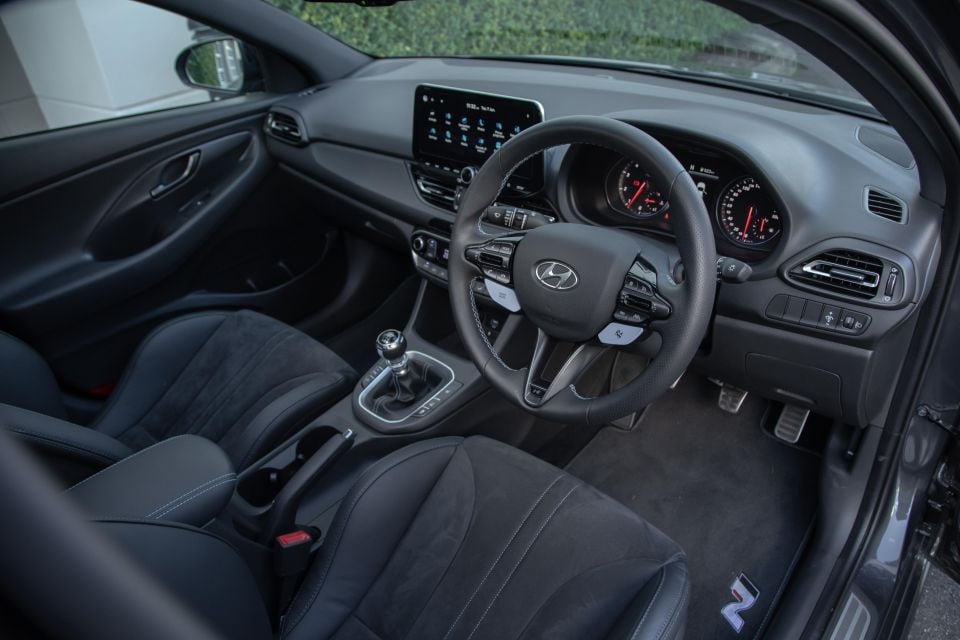
Buy your new car without the stress. It's fast, simple and completely free.

Great service from Travis and team, second time I have used this business would not hesitate to recommend them to anyone
Craig C.
Purchased a Ford Ranger in Sunshine Coast, QLD
CarExpert helped Craig save thousands on his Ford Ranger, now let us save you on your next new car.
Find a dealOutside or in, there’s just enough new stuff to bring a fresher aesthetic spin to the Fastback even if, wheel and seats apart, it gets tough to pinpoint what exactly has been massaged.
For the exterior, at least, the forged 19s and toned front fascia bring extra purpose to the Fastback’s impact, especially with our tester’s dark paintwork.
The cabin certainly feels old-school despite the best efforts of the newly enlarged multimedia system and those racy bucket seats, with their illuminated N logo and handy heating.
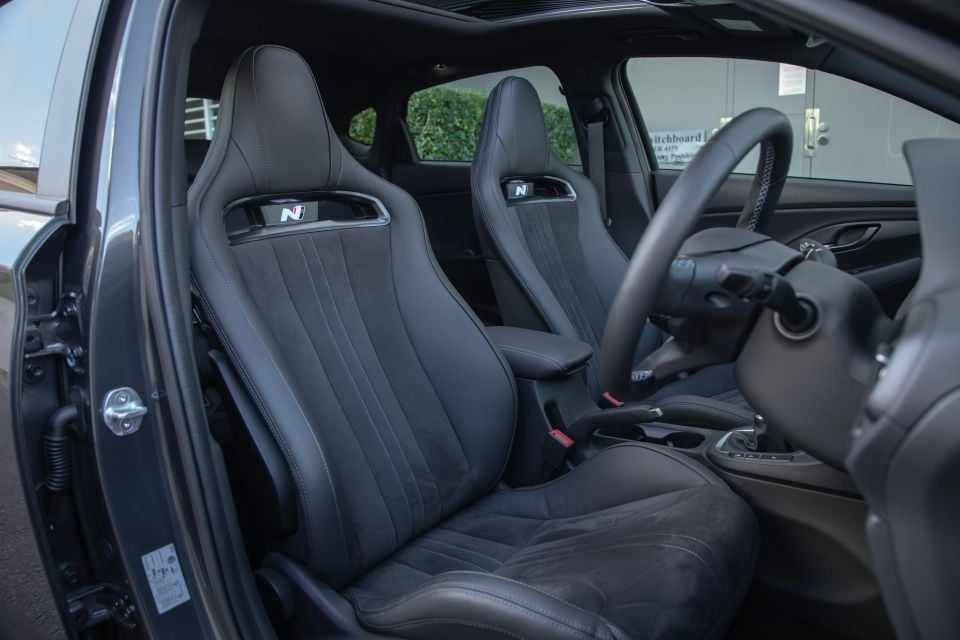
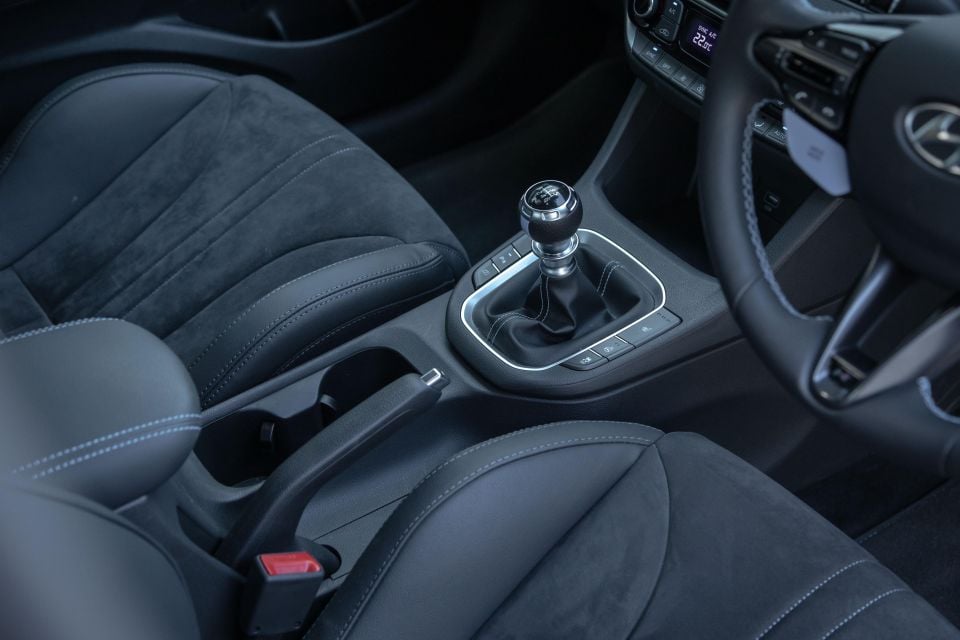
Talk about raw – they are lacking any electric adjustment seemingly for a weight saving of 1.1kg per seat. At least they’re deeply bolstered, set nice and low, trimmed lovingly and are as purposeful as they are comfortable despite the lack of lumbar tweak-ability.
Much of the rest of the look and feel of the cabin is familiar i30 N (Hatch) stuff, with solid build quality and fairly frill-free execution that throws soft-touch splashes across a largely hard plastic façade
It’s neither too-cheap nor really all that premium, save for the feel of the button and switchgear and the nice, tactile N-certified wheel with its bright blue shortcut buttons.
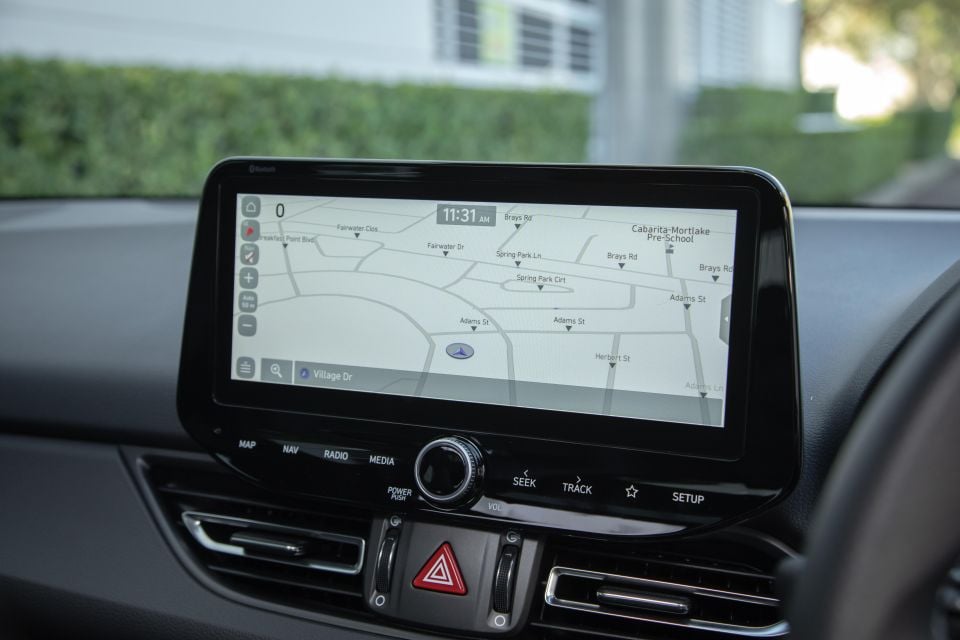
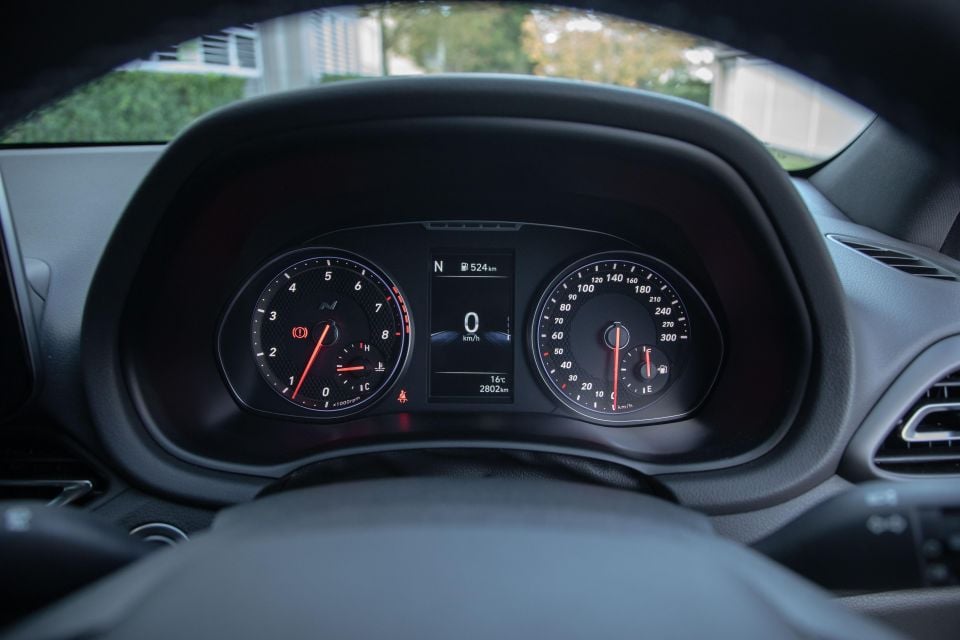
The analogue instrumentation is certainly showing its age and is down-market compared with the digital displays offered in the likes of Volkswagen’s Golf GTI and Renault’s Megane R.S.
Its 4.2-inch TFT screen is clear and handy, if slightly annoying with its strobing background graphic effect – no biggie. There are shift lights too if you’re really chasing the end of the redline.
Ergonomics are sound and ready for action, though one nit-pick is that the manual shifter does seem situated a little lower than an ideal height. Otherwise, all the controls are positioned and weighted for a chunky vibe and go-fast purpose.
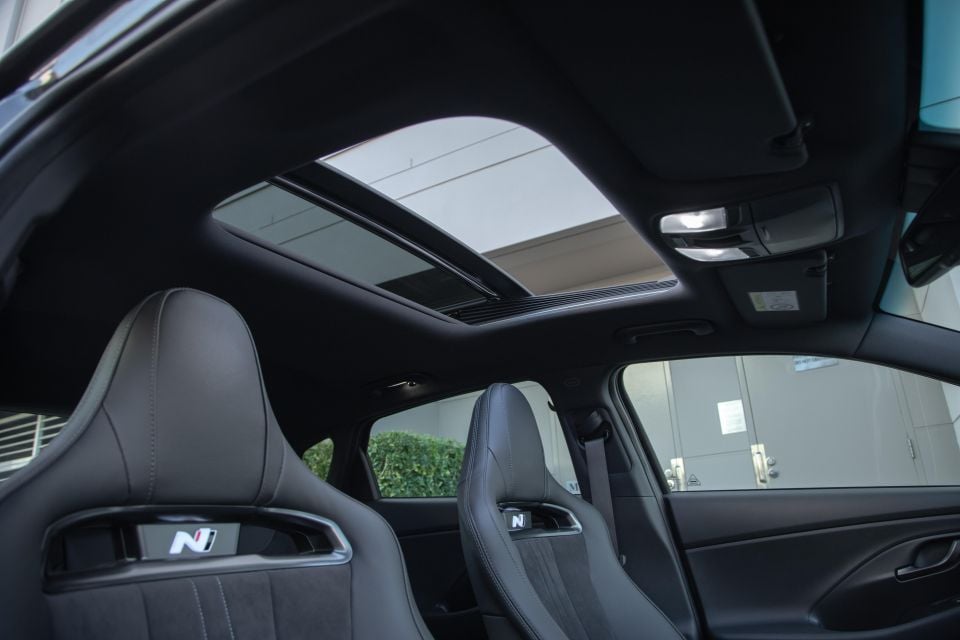
The 10.25-inch multimedia system feels like a transition from Hyundai’s dour older system and the similar-sized high-end system on other model lines. You still get shortcut dials and buttons in the display frame but they’re now more cleanly integrated.
Infotainment features are friendly enough while there’s plenty of geeky performance telemetry content for the go-faster diehards.
The wireless phone charging is welcome; though, you still need to wire up your phone for mirroring.
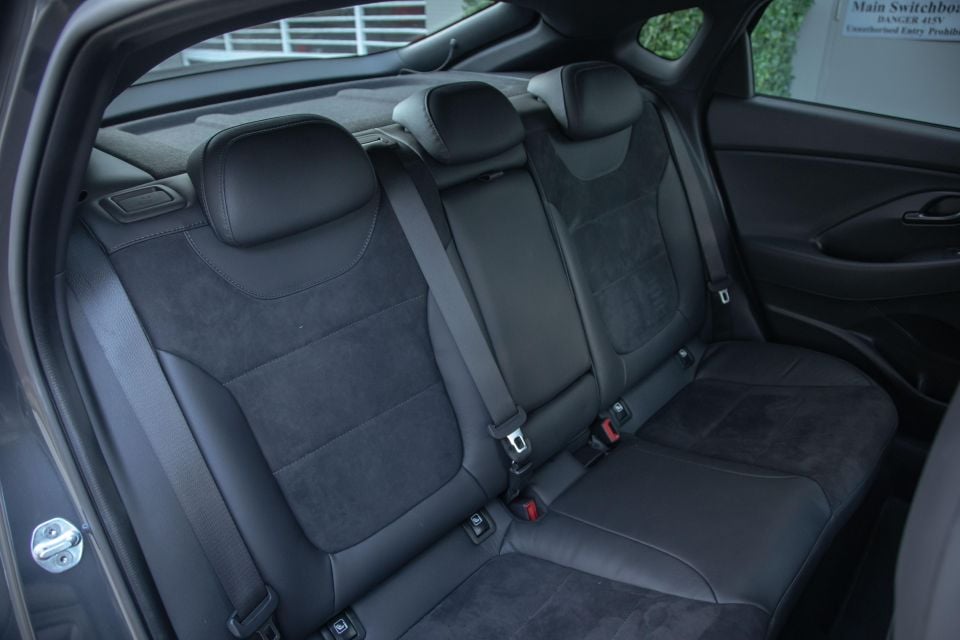
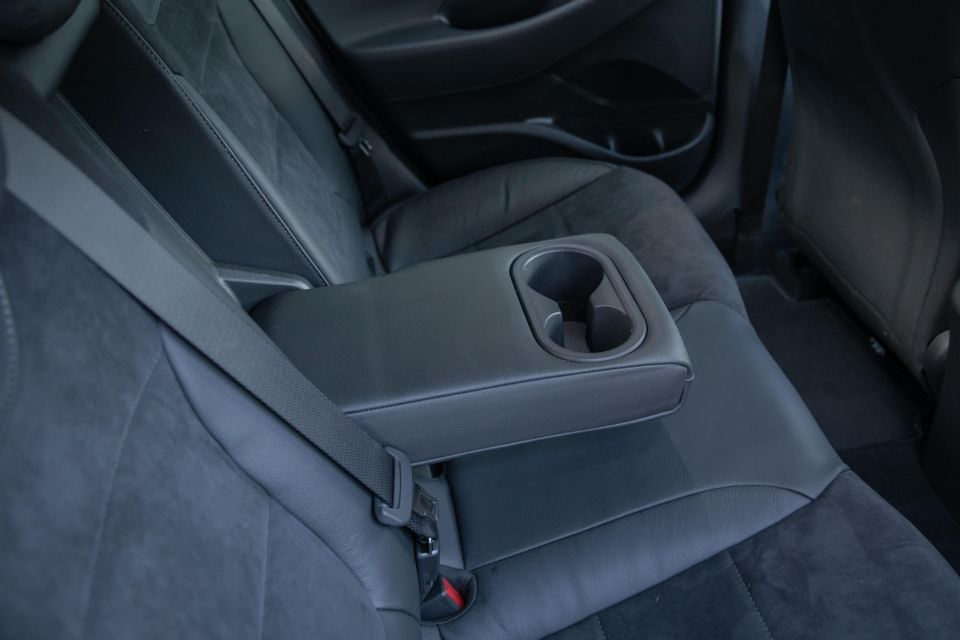
The Fastback does bring some compromises in packaging compared with the i30 Hatch N. The second row is slightly tighter in shoulder room and lower in its coupe-like roofline.
That said, it’s still roomy enough for proper four-adult accommodation.
The leather and Alcantara trim makes the rear accommodation feel quite plush; though, the absence of rear air vents or device power is a letdown.
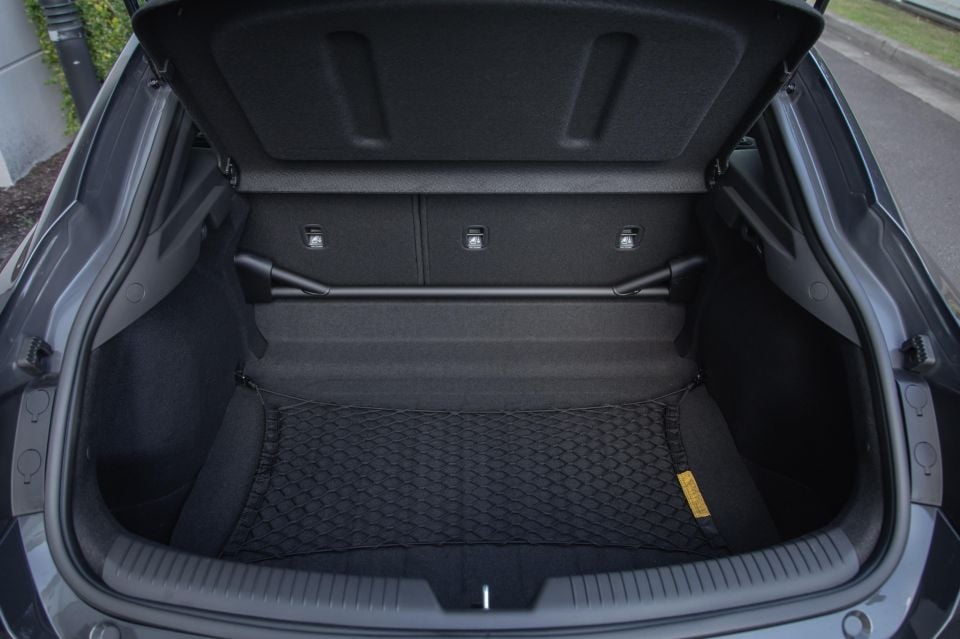
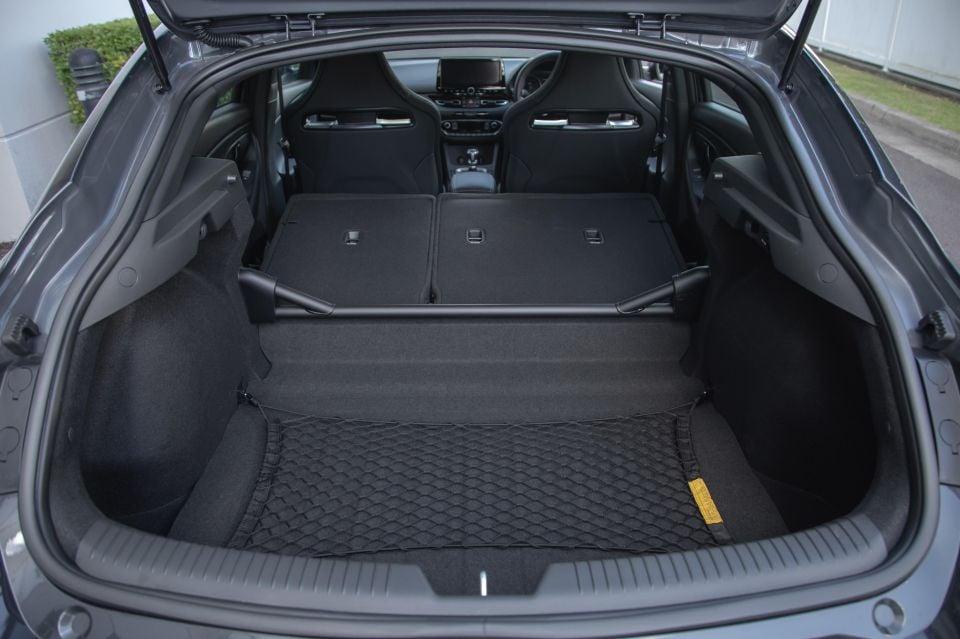
The coupe-style format does bring superior (436L) boot space to the hatchback (381L) and the rear seats fold to liberate 1337L.
The large body brace does inhibit load through to an extent but is easy to negotiate if you’re loading bicycles for example.
If you’re thinking of lugging around large objects such as fridges then you’ve probably chosen the wrong vehicle to begin with – though it is removable should you require the space.

There’s been some key changes to the 2.0-litre turbocharged petrol four. It gets a new turbocharger and intercooler and now outputs 206kW and 392Nm, up 4kW and 39Nm over the old version.
In fact, peak torque is superior to the old engine’s momentary overboost function (378Nm).
The engine also gets what Hyundai calls a “flat power” tune that provides more torque and power lower in the rpm range, its torque peak spread in a 2100-4700rpm band ahead of its 6000rpm headline.
There’s plenty of go-fast trickery in the N package. Rev-matching, launch control, N Corner Carving Differential (e-LSD) and a variable sports exhaust are standard. The humorously named N Grin Control offers five drive modes, including a customisable setting.
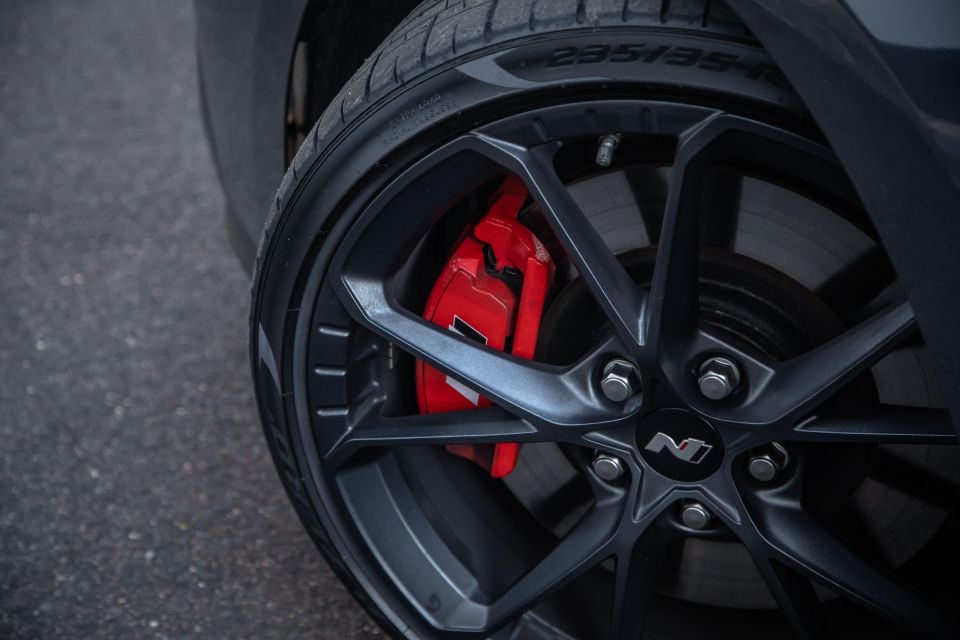

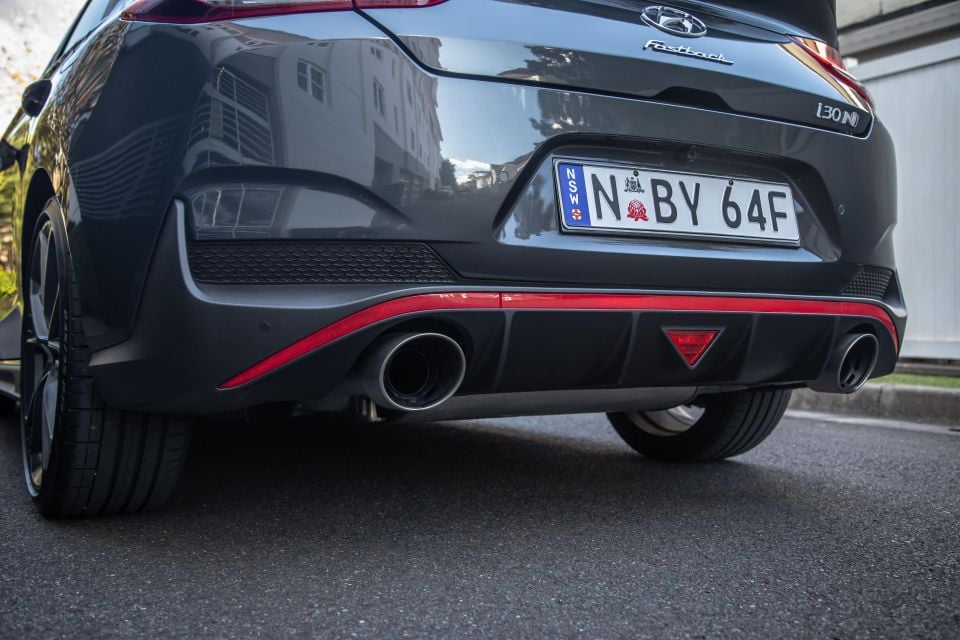

Our tester is the six-speed manual, but if you stump for the N-spec wet-type dual-clutch eight-speed transmission it brings an assortment of tricks that include: N Grin Shift (maximum engine and transmission attack for 20 seconds); N Power Shift (hard upshifts above 90 per cent throttle) and N Track Sense for optimum track self-shifting.
The suspension is electronically adaptive and features a wider front track as well as locally developed tuning, comprised of revised geometry and new spring, damper and bush calibrations.
As mentioned, the wheels are lightweight forged 19-inch items and fit Hyundai-specific Pirelli P Zero HN rubber spec. Front brake discs are upsized from the old 345mm to 360mm, and there’s a removable stiffness bar that brace the body behind the row two seats.
Performance is claimed at 5.4 seconds for the DCT version with a top speed of 250km/h.
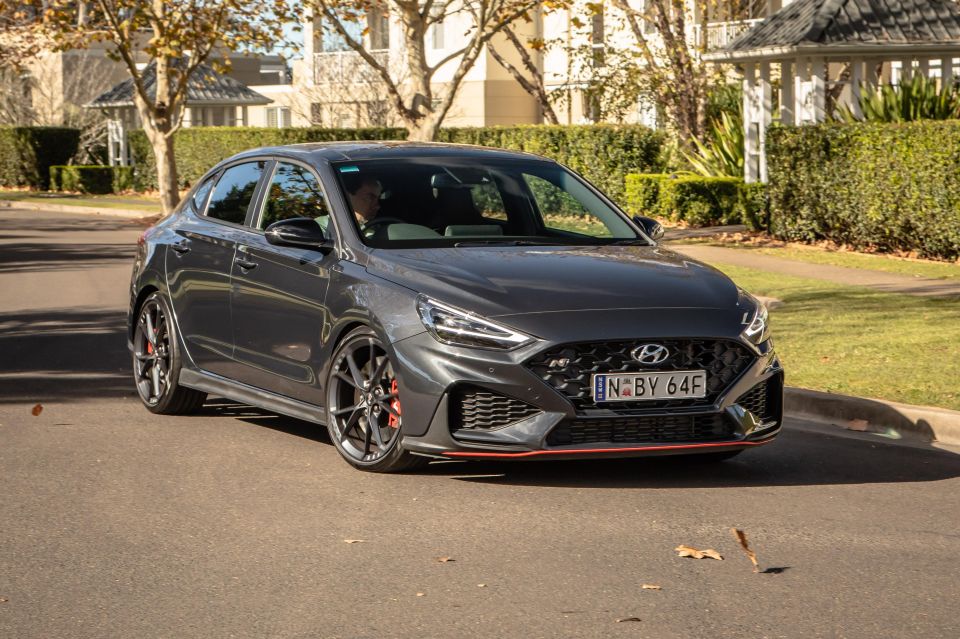
It possibly goes without saying, but I’ll say it anyway; the Fastback is no milder than its i30 N hatch twin, which is renowned for being quite the potent hot hatch.
And, given much of the newfound facelift and Limited Edition effect makes for a more capable and focused performer, it’s fair to expect a pretty capable result – that’s precisely what it delivers, even if some of the added heat and sharper focus have improved by subtle measures.
It fires up with i30 N’s trademark bark, cruises about with the same aural grumble, pops and crackles on the overrun in its more serious settings, of which there are plenty to muck about with. It makes the right noises in a familiar way.
There’s nothing peaky about engine tractability. It’s flexible, downright polite and very usable, easy to walk off the mark and progressive in shove as the rpm rises.
Nanna could drive it, provided your Nanna can modulate a fairly assertive clutch bite point and ride the throttle a touch, as driver laziness will cause it to stall.
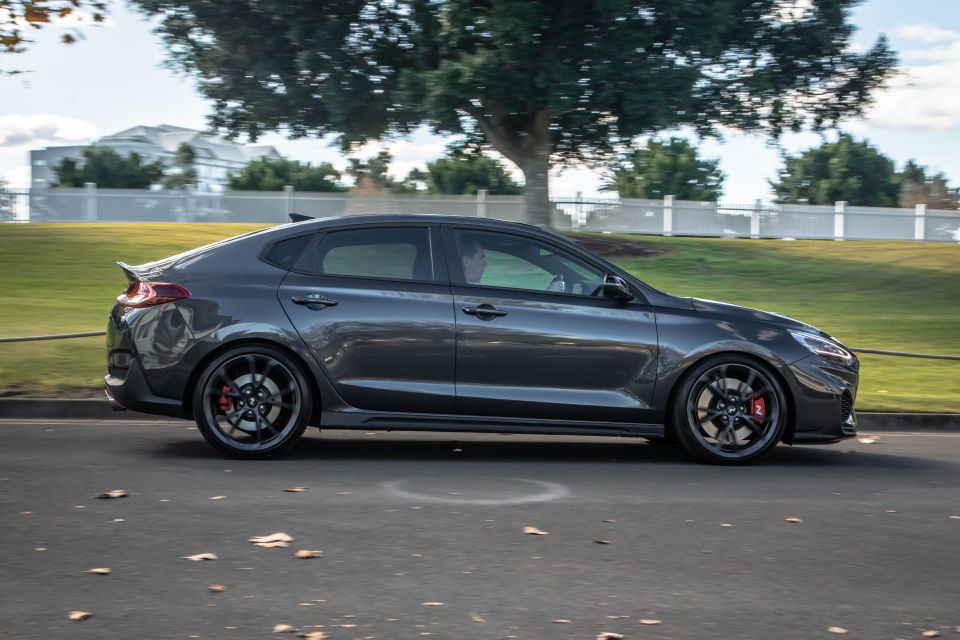
Dig in and potency is apparent but, again, its extra herbs are in thicker torque by shades rather than top-end peak. Does it feel noticeably swifter than or characteristically much different to the old version? Not really.
That said, Hyundai’s N division really did get the old powertrain oh-so right first time out. Right down to minutiae of drive mode calibrations, electronic LSD tuning and support features such as the rev-matching on downshift.
It all works just as I remember it did: fantastically well. Almost to a point that, tangibly, there’s not all that much new or different to report by the seat of the pants.
Quick? You bet. Perhaps not quite as quick as the dual-clutch version, and you can’t be lazy or inaccurate with the upshifts, but that’s precisely the allure and engagement of old-fashioned cog-swapping.
On balance though, it’s perhaps is the chassis more than the powertrain that brings a touch more of its inherent go-fast vibe.
The steering is direct and quite mechanical in transmitting information – perfect. Better yet, the ratio isn’t overly sharp off-centre, thus offering more pinpoint accuracy through the wheel.
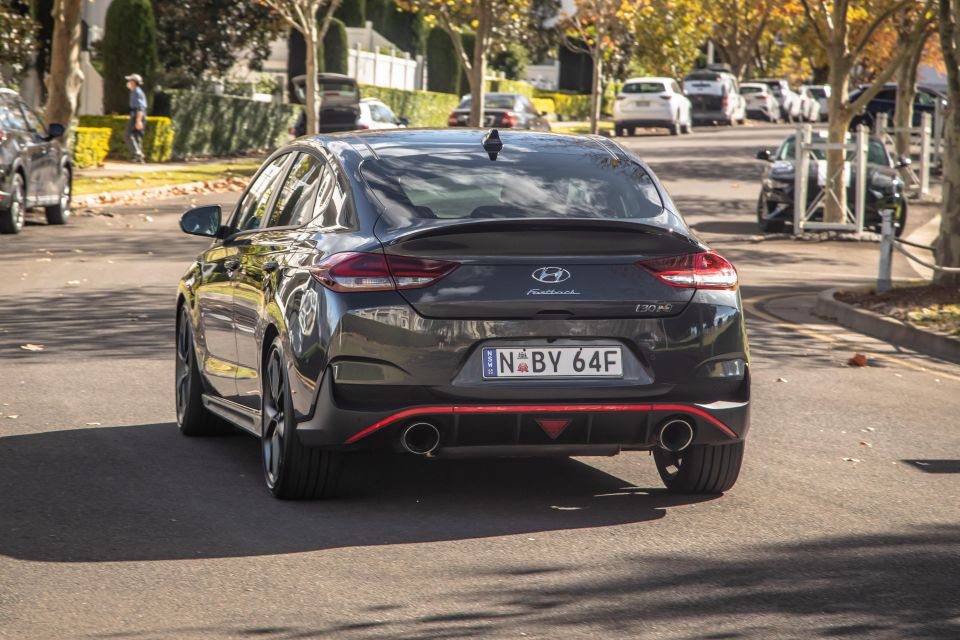
Where expert car reviews meet expert car buying – CarExpert gives you trusted advice, personalised service and real savings on your next new car.
By default, its weighting is on the heavier side of fluid. Thankfully, you can dial in more assistance using the customisable drive mode setting.
The same can be said for the suspension. It feels flab-free and offers faithful transmission of the road surface up through the driver’s hips, though it’s quite stiff and rigid in its normal setting – to the point of being too punishing for around town commuting.
There’s just enough compliance in its softest mode to return everyday ride comfort that’s not downright fatiguing during longer drives.
Of course, head for the hills and show it a set of peachy corners and the i30 Fastback N welcomes its natural habitat with enthusiasm. It pries an impressive amount of grip from its bespoke Pirellis with ample feel through the wheel if you’ve fired into a corner a little too hot.
There’s impressive balance mid-corner, too, and it responds obediently to throttle lift to add extra rotation and bring the rear around.
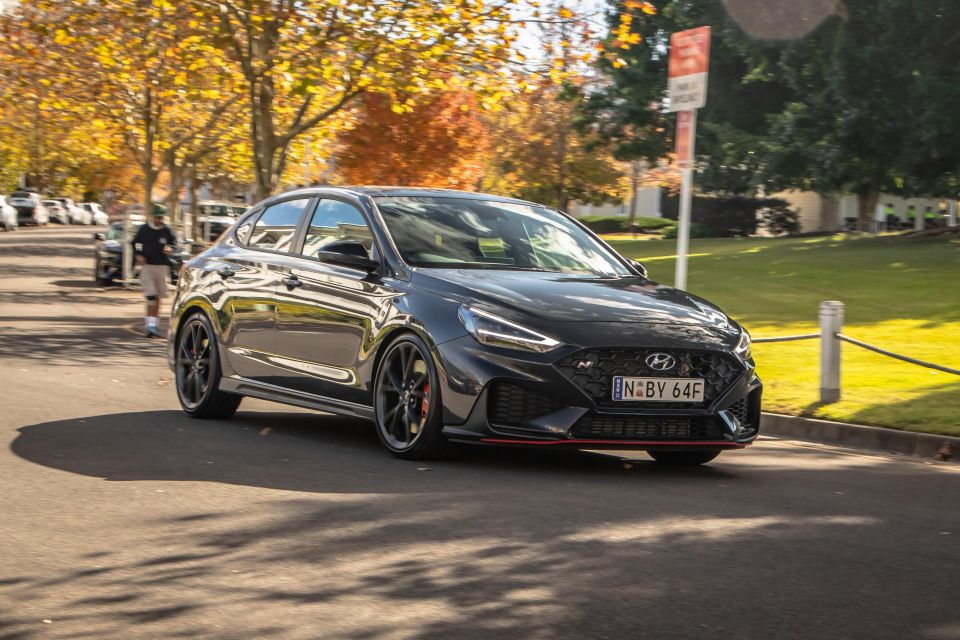
It’s pokey and fizzy enough in Sport. Opting for Sport+, or meddling with rev-matching and the like, simply brings more options to add extra fanfare.
There is a loose ESC calibration in the plus mode, but you really need to be up there for the coupe to start clamping down on its stability protocols.
Give the berries from a standstill, though, and you will get some front axle tramping as the tyres scrabble for traction.
The newly enlarged brakes also offer tremendous stopping power and are really in their element when you’re pushing on. Around town though, they can be a little bitey and abrupt in take-up at low speed.
General comfort and refinement are quite good. It’s not simply enough for today’s hot hatches to trade pleasantry for heat and the i30 Fastback N feels quiet, solid and noise-suppressive enough without robbing from the performance character you’re clearly buying.
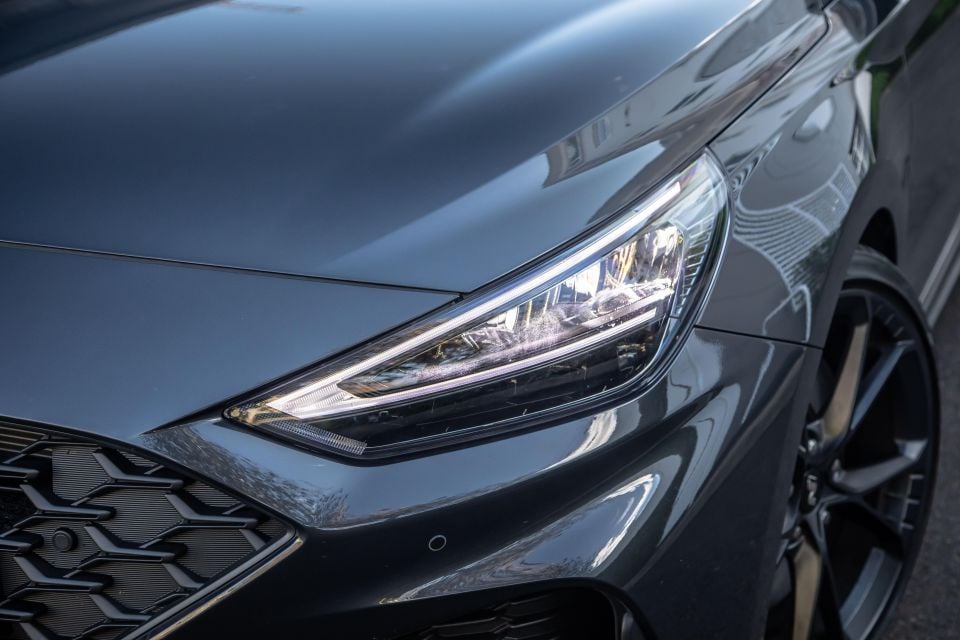

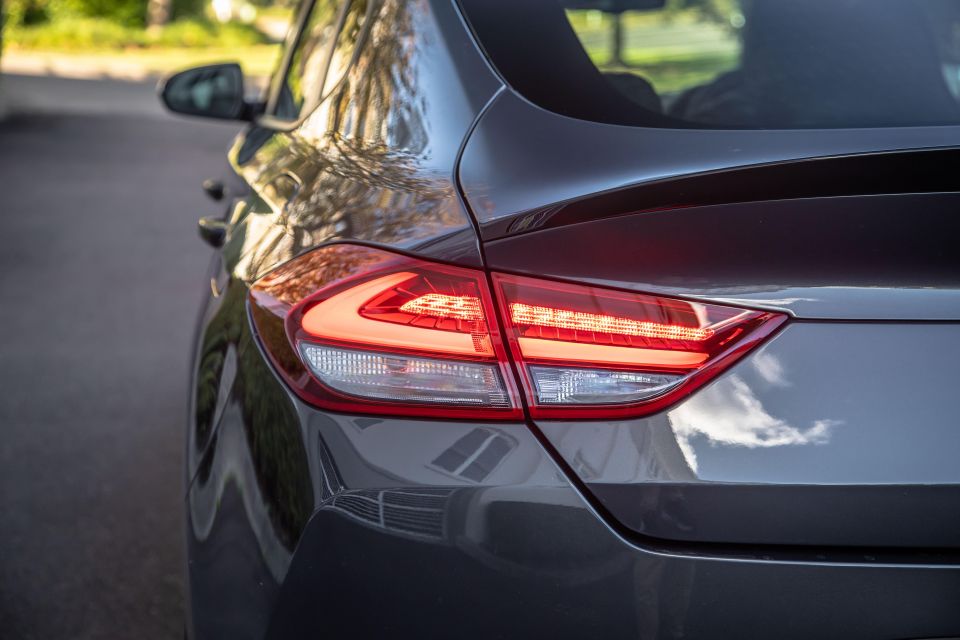
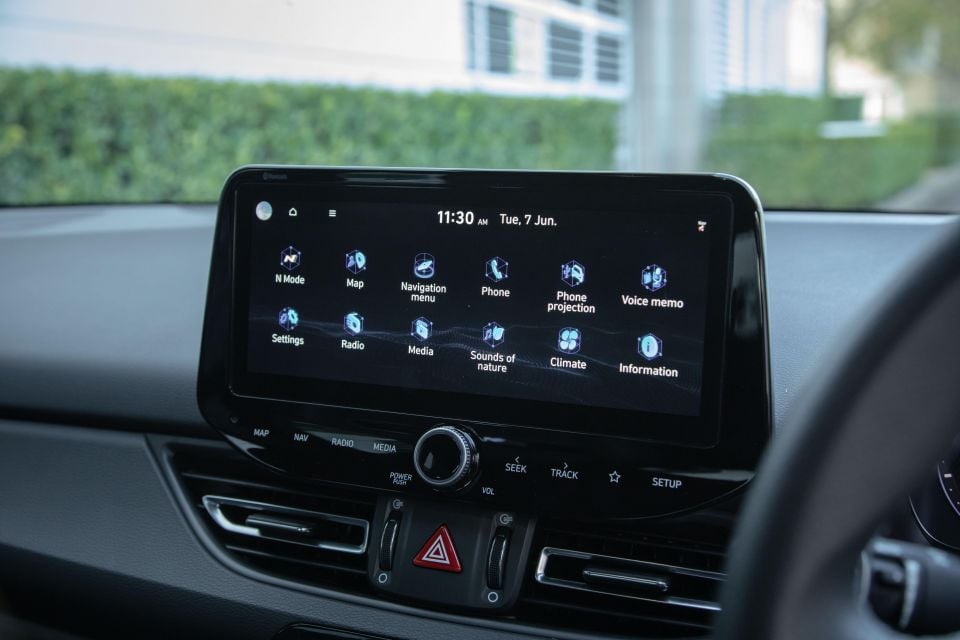
i30 Fastback N Limited Edition highlights:
Premium paint is a $495 option while a panoramic sunroof adds $1500.
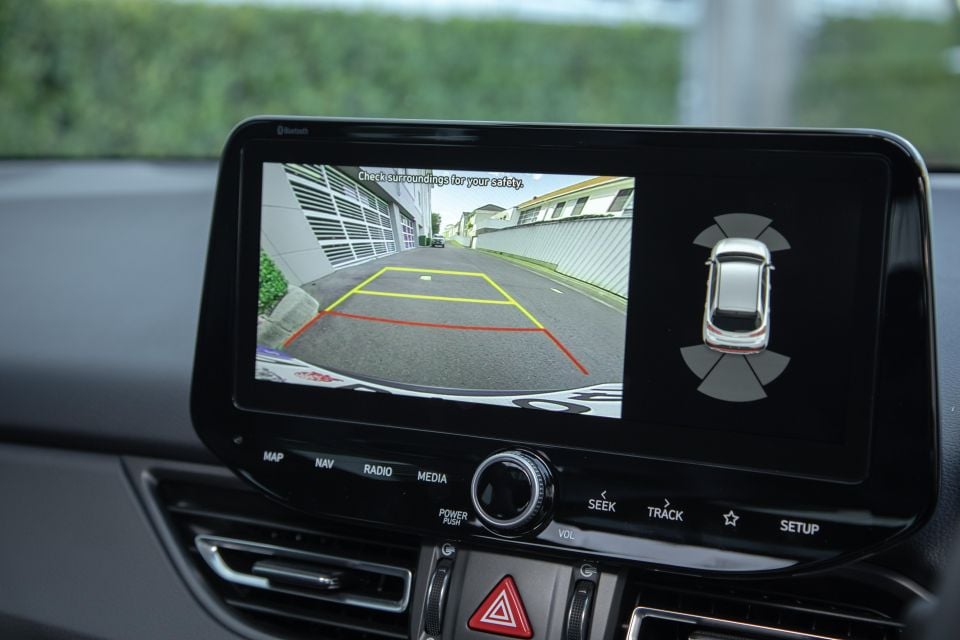
While ANCAP awarded the regular i30 hatchback range five stars back in 2017, its rating specifically excludes N variants of any body style.
Standard safety features include:
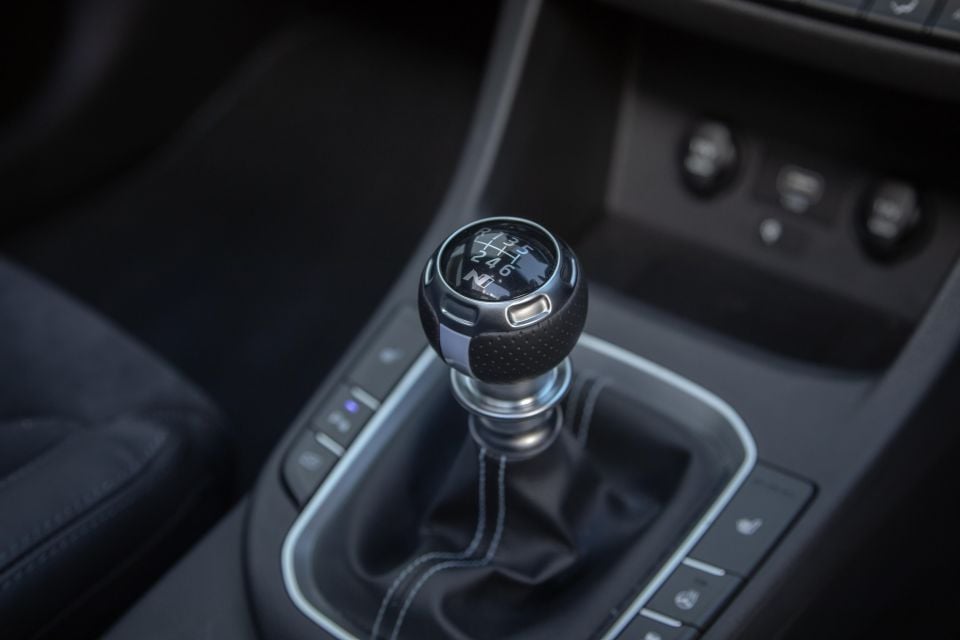
The i30 Fastback N is covered by Hyundai’s five-year, unlimited-kilometre warranty, which covers non-competitive track use, too.
Indeed, Hyundai is one importer that fosters enthusiastic off-street activity via endorsing N owner events across Australia.
Servicing is required every 12 months or 10,000km, whichever comes first. Hyundai offers prepaid servicing plans for its i30 N range from $1005 for three years/30,000km, $1340 for four years/40,000km or $1675 for five years/50,000km.
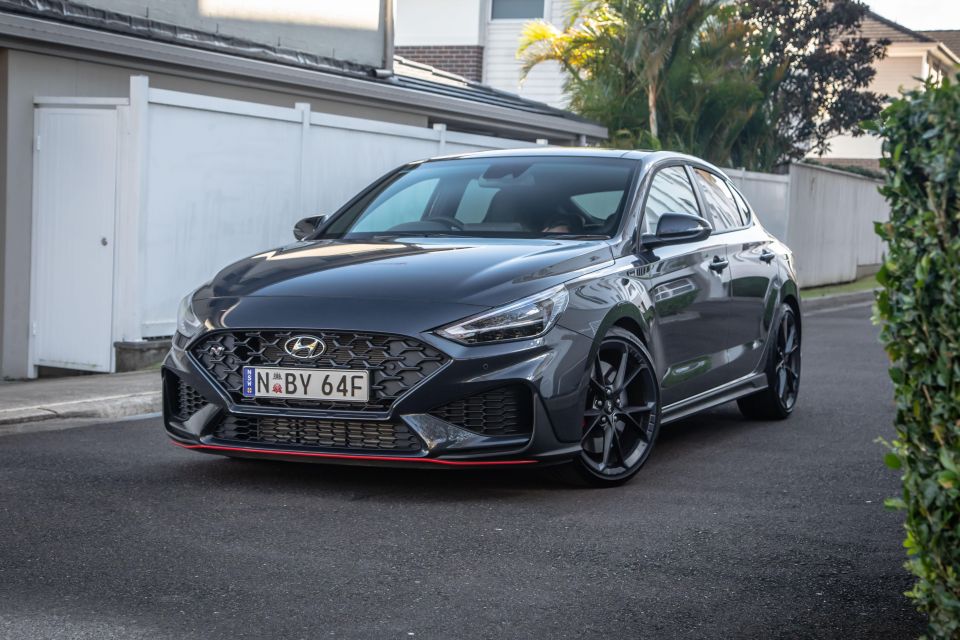
The Fastback N LE is more than a farewell pack offering a smattering of extras.
Its facelifted looks, upgraded engine, suspension, brakes, as well as touches such as the forged wheels and bucket seats conspire to make the whole package quite special and ought to bring genuine collector appeal for the N-loving completists.
Sure, there’s a fair argument if you’re into it for heat alone you’d go for the more popular hatch alternative. But the liftback coupe format is certainly different enough to appeal to particular buyer tastes and, besides, when was choice such a bad thing?
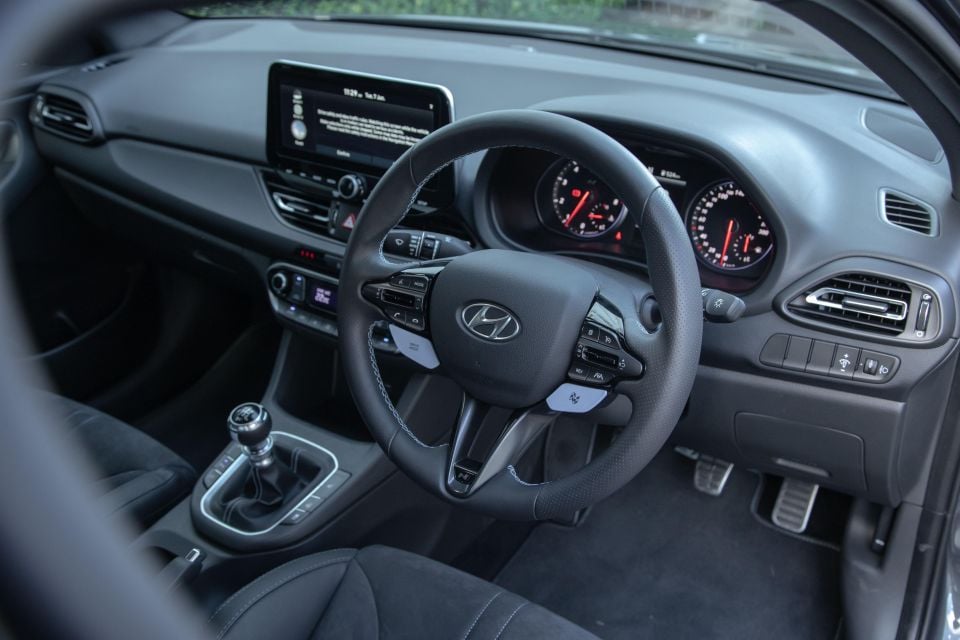
Having recently sampled the (excellent) i30 Sedan N on track and skid pan I can attest the i30 Fastback N isn’t the same recipe in different sheet metal – the i30 Sedan N/Elantra N is based on a completely different newer platform, after all.
The latter is a bit rawer, a little more old-school and there’s a particular charm it brings that the more modern four-door hasn’t quite tapped just yet.
While the Fastback might prove to be the least popular of today’s i30 N crop, this final Limited Edition version is certainly its best and arguably most desirable version.
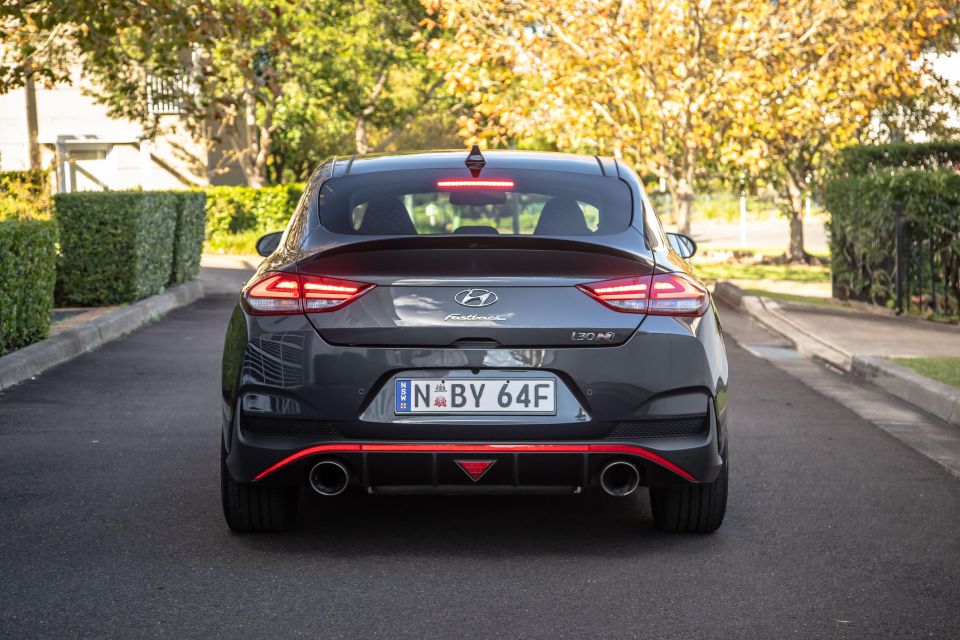
Click the images for the full gallery.
MORE: Everything Hyundai i30
Where expert car reviews meet expert car buying – CarExpert gives you trusted advice, personalised service and real savings on your next new car.


Max Davies
2 Days Ago


Damion Smy
3 Days Ago
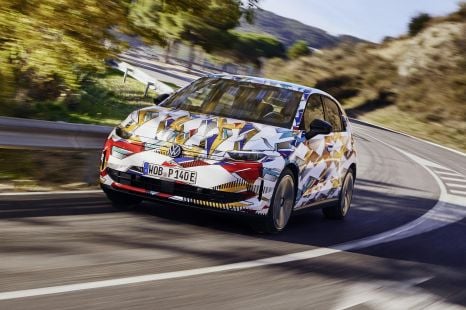

William Stopford
6 Days Ago
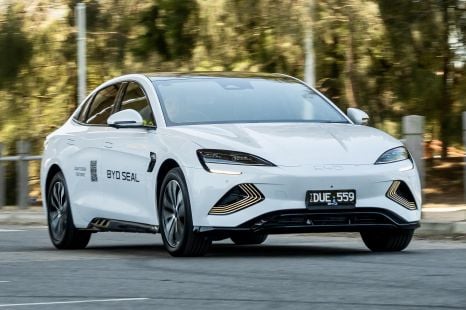

Max Davies
7 Days Ago
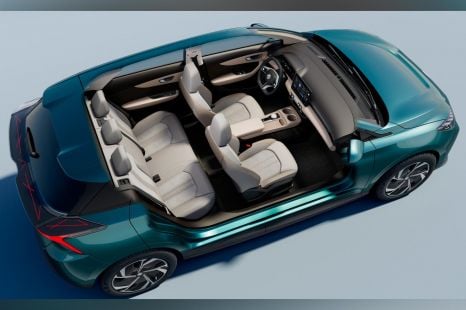

William Stopford
8 Days Ago
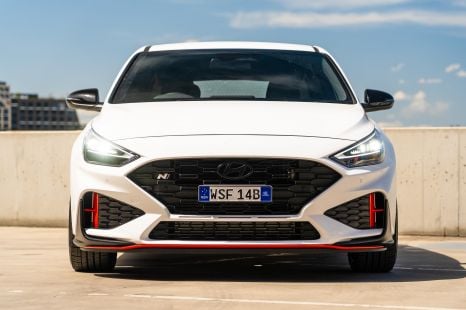

William Stopford
13 Days Ago